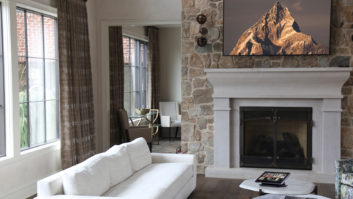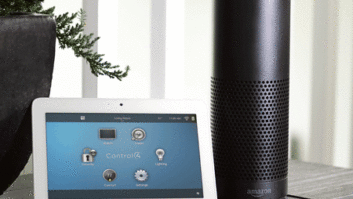“Have you seen what we’re doing for our members?” asked the clean-cut DirecTV sales rep in our local Costco. I’d heard this siren call many times before but never answered. I decided to play along and take a fresh look at the world of Big Cable.

Image: Thinkstock
The rep asked me a few questions about my current internet service provider including what I paid per month. He then showed me an illustration demonstrating I’d be paying more per month with DirecTV than my current service. While I didn’t end up buying DirecTV, it got me thinking about the position of the internet service provider in the home and where our industry falls in this changing landscape.
As we drive past homes on the street, 82 percent of them are pay TV customers. Over the years, attitudes have shifted around the pay TV industry, but the fact remains that home tech pros have to interact with service providers on a regular basis (I’m guessing you might have your local hotshot cable company “fixer” on speed dial). Until recently, service providers were a necessary part of doing business, but not what anyone would’ve described as innovative. Fast forward a few years, and now Xfinity has more than one million home security customers and is rolling out its own mesh networking solution. We used to laughingly thank the service providers for advertising and raising consumer awareness, so we could more easily cater to our clients’ desires for home technology simplicity. That same service provider has now improved its game and is intent on competing with us in the most profitable space that we have: recurring monthly revenue (RMR).
If you offer security systems to your clients, you might have already run into this phenomenon of bundling together Wi-Fi, security, and the usual “triple play” phone/internet/TV services. When Comcast was earning a “D” customer service rating, it was a laughable punchline. Now it stands to threaten portions of our business, particularly in new home construction.
In home building, almost 100 percent of our clients will need to schedule a service provider like Comcast, FiOS, or DirecTV to install services during move in. While that used to be a benign appointment, it’s now a competitive threat in some circumstances. What better way to eliminate this threat than becoming the first in line? Imagine telling a homebuilder that you’re now a one-stop shop for home technology from start to finish (no matter the provider) and you’ll handle all the customer installation work or appointment coordination if needed. Many of the service providers have their own authorized dealer programs. Comcast’s program is called CXI and is designed to help integrators schedule appointments. It’s still a Comcast technician who shows up, but by that time, the sales phase is over.
Don’t get me wrong, saying that you will handle all the service provider installation hassles shouldn’t be handled lightly. Unless your standard package with the builder includes a product-generating RMR, stay away. If you standardize a managed services support package (Ihiji, OvrC, Domotz, etc.) or monitored security system solution like Alarm.com, you’ll be making that trip anyway to activate the system once the internet connection is active.
If your standard package includes a Wi-Fi doorbell or network, then you need to be there when the internet is activated anyway. Why not turn this third trip from a liability into an asset? I don’t know about you, but in the builder business, the fewer the trips, the better. We’ve always dreamt of a perfect builder installation where we’re able to do the rough-in, and then activate the alarm panel during trim out, including account setup where the remainder could be done remotely. The advent of Wi-Fi doorbells has officially killed that dream. Maybe that’s OK because it’s forcing us to consider the reality of a third “finish-out” trip with each home. If there’s an RMR account to activate, that third trip becomes less of an issue because you have more runway to make that lost trip revenue back.
Would you offer your builder clients the “one-call-does-it-all” approach for homes with RMR pre-sold? Why or why not?
Stay frosty and see you in the field.





